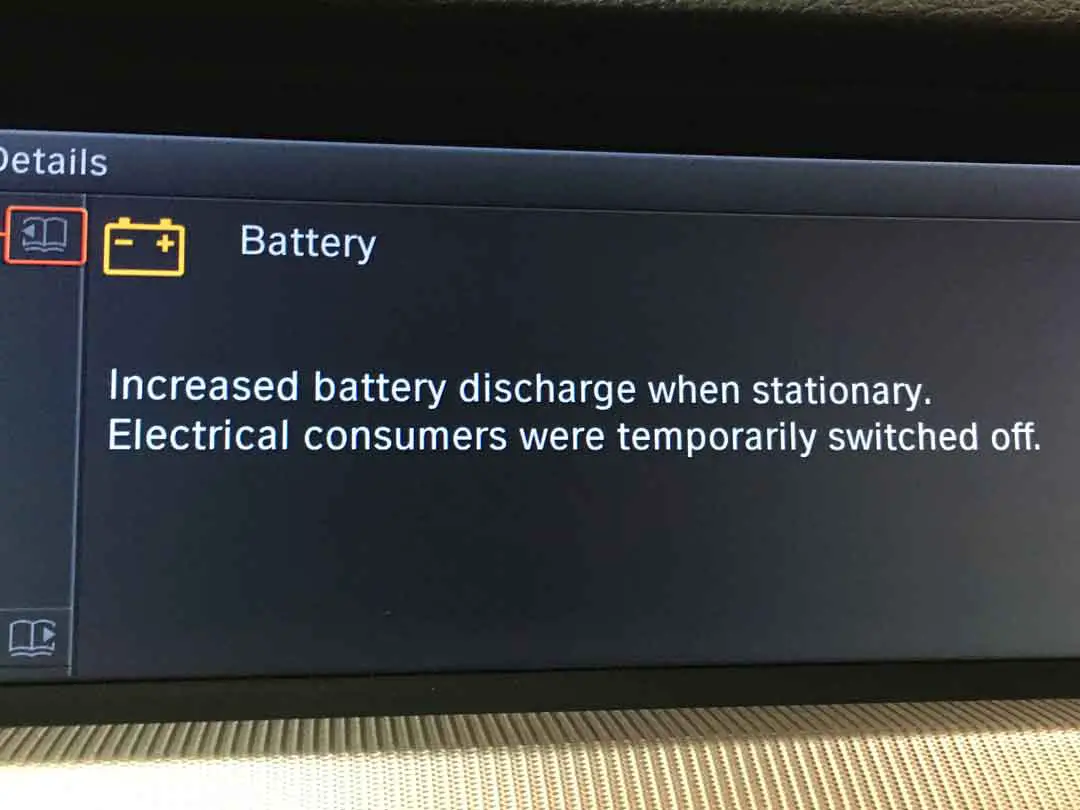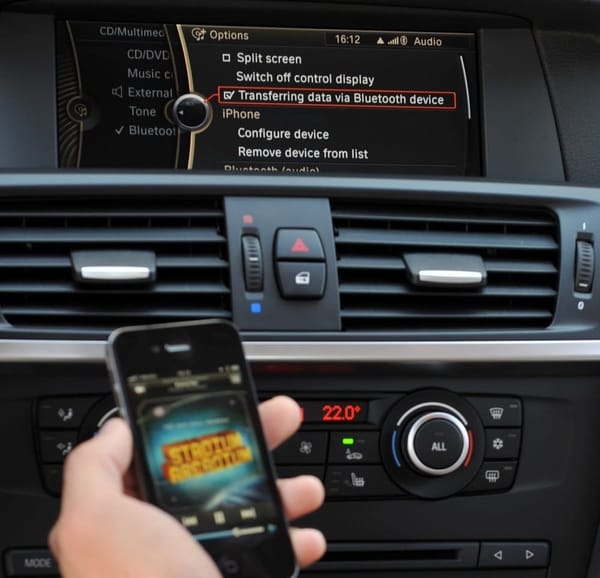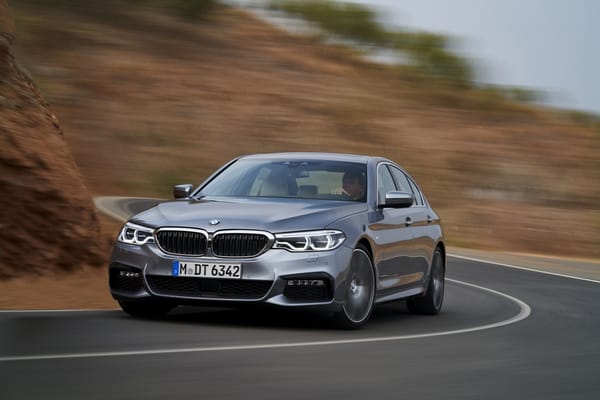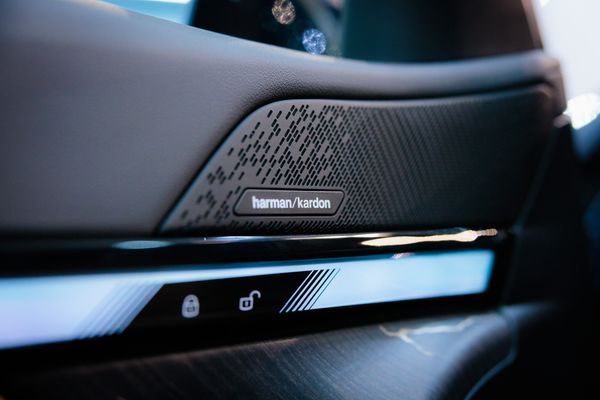Navigating the Maze: Understanding BMW's Increased Battery Discharge Warning

When it comes to precision engineering and cutting-edge innovation, BMW stands tall in the automotive world. However, even the most meticulously crafted machines aren’t immune to the occasional hiccup. Enter the sophisticated electrical systems of BMW, specifically those equipped with the Intelligent Battery Sensor (IBS), a feature that has been a staple in models since 2005.
Now, imagine this: you hop into your beloved Bimmer, turn the ignition, and are greeted by a warning message that reads something along the lines of “Increased battery discharge while stationary” or a slight variation of that. It’s a moment that can leave even the most seasoned drivers scratching their heads. What does it mean? Is it serious? And most importantly, what should you do about it?
Fear not, dear reader, for you’ve come to the right place. We’ll explore what the warning is trying to tell you, delve into the potential causes, and provide practical advice on how to address it. So, buckle up and get ready for a ride through the intricacies of your BMW’s electrical system, demystified and laid bare for all to understand.
Decoding the Warning - What Does it Really Mean?
Picture this: You’re all set for a drive, you turn your BMW’s ignition, and suddenly, a mysterious message pops up on your dashboard, saying “Increased battery discharge while stationary” or something similar. It might seem like your car is speaking in riddles, but worry not—I'm here to translate.

The Intelligent Battery Sensor (IBS) and Its Role
BMW, in its quest for automotive excellence, has equipped its vehicles with a nifty gadget called the Intelligent Battery Sensor (IBS). This little genius sits quietly, monitoring the lifeblood of your car—the battery. When your BMW is taking a nap (read: parked and locked), the IBS keeps an eye on the battery’s state of charge (SoC). Think of it as a diligent caretaker, ensuring that everything is in tip-top shape for your next adventure.
The Threshold and the Warning
So, what happens when things go south, and the battery’s SoC decides to take a dive below a certain level? That’s when the IBS rings the alarm bells. The car’s engine electronics (DME/DDE) step in, swiftly turning off all the non-essential consumers (fancy talk for parts of the car that use electricity but aren’t crucial for starting the engine) to save what’s left of the battery’s power. And then, as a courteous heads-up, your BMW flashes the “Increased battery discharge” warning, letting you know that all is not well in the kingdom.
Why You See the Warning After Starting the Car
You might be wondering why this warning only makes its grand appearance after you start the car or turn on the ignition, and not during your drive. Well, it’s because the IBS and the engine electronics are like the guardians of your car’s battery. They constantly monitor the battery’s state, but only sound the alarm once you’re back in the driver’s seat, ready to take on the world. They ensure that you’re informed and ready to take action, without causing any unnecessary panic while you’re cruising down the road.
The Bottom Line
In essence, when you see the “Increased battery discharge” message, your BMW is not just throwing a random tantrum. It’s a well-thought-out warning system, designed to give you a heads-up that your battery needs some attention, all while ensuring that you have enough juice to start the car and get to where you need to go. So, take a deep breath, pat your Bimmer on the dashboard, and know that you’re in good hands. The next step? Figuring out what’s causing the issue and how to fix it—but don’t worry, we’ve got you covered in the sections to come. Stay tuned!
Unraveling the Mystery - The Four Possible Culprits
Now that we’ve decoded the “Increased battery discharge” message and understand what it’s trying to tell us, it’s time to play detective. Why is your BMW’s battery feeling under the weather? There are four main suspects in this mystery, and we’re going to interrogate each one to get to the bottom of things.
Low State of Health (SoH) of the Battery: The Aging Rockstar
Think of your battery as a rockstar that’s been on tour for decades. In its prime, it could perform night after night without missing a beat. But as the years go by, it starts to lose a bit of its spark. This is what we call a low state of health (SoH). The battery is old, it’s tired, and it just can’t hold the voltage like it used to. If your BMW is more of a vintage model, or if you’ve been rocking the same battery for a good number of years, this could very well be the culprit.
Low State of Charge (SoC): The Drained Performer
Now, imagine your rockstar battery gave an epic performance last night, but didn’t have time to recharge before the next show. This is a low state of charge (SoC). Maybe your BMW’s been sitting in the garage for a few months, or you’ve only been taking it on short trips around the block. Or perhaps there’s an electrical consumer (like your radio or interior lights) that’s been partying a little too hard while the car is off. These scenarios can leave your battery drained and struggling to keep up, triggering the warning message.
Faulty Battery Monitoring System: The Misunderstood Artist
Sometimes, the problem isn’t with the battery itself, but with the system that’s supposed to be keeping an eye on it. If your BMW’s battery monitoring system is on the fritz, it can send out false alarms, making you think your battery is drained when it’s actually just fine. It’s like a misunderstanding between the band manager and the rockstar, leading to some unnecessary drama.
Battery Drain: The Unwanted Encore
Lastly, we have the issue of battery drain, which in BMW-speak, is often due to unwanted wakeups. When your car’s control modules get an unexpected wake-up call (like from a faulty parking sensor or a rebellious shock absorber), they start drawing power from the battery, leading to an unwanted encore that drains the energy right out of our rockstar. And if you’ve added any aftermarket equipment that’s not in harmony with BMW’s system, that could also be a backstage culprit.
The Final Note
So there you have it—the four possible culprits behind your BMW’s battery blues. Like a good detective, it’s now your job to figure out which one (or ones) is responsible for the “Increased battery discharge” message. But don’t worry, you’re not alone in this. In the next section, we’ll break down these issues with some analogies to make everything crystal clear. Stay tuned, the investigation continues!
Battery or IBS: Who's the Villain?
It's a classic conundrum: You have what seems like enough power, but the engine just won't play ball. Is it the battery waving a white flag, or is the IBS sending out false alarms?
- The Scenario: Your battery reads 11.7V, which is a bit like seeing your phone at 10%. Technically, it should still work. But sometimes, despite the charge, the DME acts like an overprotective parent, refusing to let the engine start, fearing it might drain the last of the battery's life.
- The Quick Experiment: Try unplugging the IBS. Think of it as rebooting a misbehaving computer. If the warning disappears and the car roars to life, it might seem like a victory. But hold the champagne. This doesn't necessarily mean the IBS is the sole troublemaker. It's more like a band-aid than a cure.
- The Caveat: While this trick can get you out of a jam, it's not a definitive diagnosis. It's akin to turning off an annoying alarm – the underlying issue might still be there. You've got a clue, but the mystery continues.
Navigating the maze of potential battery and IBS issues can feel daunting. But with a systematic approach, you can pinpoint the real antagonist in this automotive drama.
Battery 101: State of Charge (SoC) vs. State of Health (SoH)
When assessing your battery, it's essential to understand its two key metrics: State of Charge (SoC) and State of Health (SoH). Imagine your battery as a seasoned marathon runner. The SoC is how energized they feel at the moment, while the SoH is a measure of their overall fitness and stamina.
- SoC - The Immediate Energy Level: Think of this as your battery's current mood. It's a snapshot, indicating how much energy is left right now. Just like checking how much money you have in your wallet before making a purchase, the SoC tells you how much energy is available for immediate use.
- SoH - The Long-Term Health: This is a more profound, holistic measure. It evaluates how well the battery has aged over time. It's like a health check-up, considering wear and tear, and predicting how much life the battery might still have. You can think of SoH as the battery's career statistics, offering insights into its past performance and potential future.
The crucial distinction? A battery can have a high SoC (fully charged and ready to go) but a low SoH (indicating it might not last much longer). It's like our marathon runner feeling energized for a race but knowing their best years might be behind them.
Understanding these metrics can help demystify your battery's behavior and guide your troubleshooting journey.
Testing Your Battery: The Right Way
Knowing your battery's mood is one thing; accurately assessing its health is another. Let's explore the proper tools and techniques to get a clear picture of your battery's condition.
ISTA Test
This is BMW's in-house doctor, specifically designed for its systems. Available for the F-Series and some of the later E-Series models, it offers a detailed diagnosis. However, be aware that not all BMWs can use this method. It's like trying to use a new app on an older phone; compatibility can be an issue.
Voltmeter Method
Consider this the home remedy of battery tests. While it might not be the most precise, it's quick and can give a general idea of battery health.
The Process
First, charge the battery fully. Then, let it rest (to remove any surface charge). Finally, measure the voltage.
- 100% Charged: 12.7V
- 75% Charged: 12.4V
- 50% Charged: 12.2V
- 25% Charged: 12.0V
- Nearly Drained: 11.9V
Remember, testing is all about accuracy and interpretation. It's not just about getting numbers, but understanding what they mean for your BMW's performance.
Final Thoughts
Your BMW is more than just a vehicle; it's a marvel of engineering, a symphony of interconnected systems, each playing its part to ensure you have a smooth drive. The "Increased Battery Discharge" warning is just one of the many ways your car communicates with you, ensuring you're always in the loop about its health.
While the alert may sound ominous, it's often just your car's way of saying, "Hey, something's a bit off, and I thought you should know." With the knowledge you've now gained, you're better equipped to understand and address this message, ensuring your BMW remains the reliable companion it was designed to be.
Remember, cars, like any complex system, require understanding and maintenance. With the right care, attention, and a bit of troubleshooting know-how, your BMW will continue to serve you with the performance and luxury it's renowned for. So the next time that warning chimes, take a deep breath, roll up your sleeves, and know that you've got this.
Safe driving!





